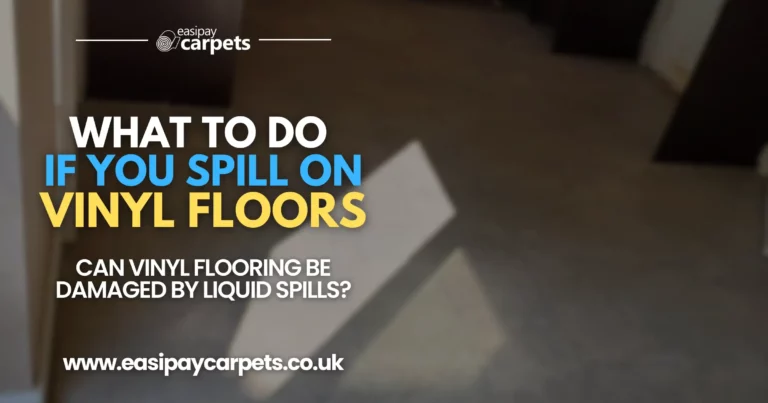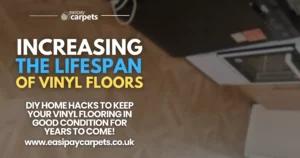

What To Do With Spills On Vinyl Flooring
Vinyl flooring is a popular choice for many homeowners due to its durability, affordability, and water resistance. However, accidents happen, and spills or leaks are inevitable in any home. If you’re wondering what to do if your vinyl flooring gets wet, or if it can handle spills, this guide will provide you with all the information you need to keep your vinyl floors looking great and free from damage.
Can Vinyl Flooring Handle Spills?
Yes, vinyl flooring can handle spills. One of the main advantages of vinyl flooring is its water-resistant properties. Unlike hardwood or laminate, which can warp or swell when exposed to moisture, vinyl flooring is designed to withstand water, making it an ideal choice for areas like kitchens, bathrooms, and basements.
Why Vinyl Flooring Is Water-Resistant:
Non-Porous Surface:
- Vinyl flooring has a non-porous surface that prevents water from penetrating the material. This makes it highly resistant to spills and stains, allowing you to clean up messes quickly and easily.
Waterproof Options:
- Many types of vinyl flooring, including luxury vinyl planks (LVP) and luxury vinyl tiles (LVT), are not only water-resistant but also fully waterproof. This means they can handle even significant spills or standing water without damage.
Sealed Seams:
- When properly installed, the seams between vinyl planks or tiles are tightly sealed, preventing water from seeping underneath the flooring. This helps to protect the subfloor and maintain the integrity of the vinyl.
What to Do If Vinyl Flooring Gets Wet: Step-by-Step Guide
Although vinyl flooring can handle spills, it’s still important to clean up any water or liquids promptly to prevent potential damage, especially to the subfloor. Here’s what to do if your vinyl flooring gets wet:
1. Clean Up Spills Immediately
Tip: As soon as you notice a spill, use a clean, absorbent cloth, paper towels, or a mop to blot up the liquid. For larger spills, a wet/dry vacuum can be effective in removing excess water.
Why It Matters: Promptly cleaning up spills prevents water from pooling on the surface, which could lead to potential seepage at the seams or edges, especially if the spill is left unattended for an extended period.
2. Dry the Area Thoroughly
Tip: After blotting up the spill, ensure the area is completely dry by using a dry cloth or mop. You can also use a fan to speed up the drying process, particularly in humid environments.
Why It Matters: Thoroughly drying the area helps prevent moisture from seeping into any potential gaps or seams, reducing the risk of damage to the vinyl or subfloor.
3. Check for Any Signs of Water Damage
Tip: Inspect the area for any signs of damage, such as bubbling, warping, or lifting of the vinyl planks or tiles. If you notice any of these issues, further action may be necessary.
Why It Matters: While vinyl flooring is water-resistant, prolonged exposure to water, especially at the seams or edges, can cause the adhesive to weaken or the flooring to lift. Early detection of damage can help you address the problem before it worsens.
4. Address Any Water Under the Flooring
Tip: If you suspect that water has seeped underneath the vinyl flooring (for example, after a flood or a large spill), it’s crucial to address this issue immediately. In such cases, you may need to lift the affected planks or tiles to dry out the subfloor and prevent mould or mildew growth.
Why It Matters: Water trapped under the vinyl flooring can lead to mould, mildew, or damage to the subfloor, which can compromise the integrity of your floor and pose health risks.
5. Prevent Future Spills
Tip: To minimize the risk of water damage, consider using rugs or mats in areas prone to spills, such as near sinks, bathtubs, or entryways. Ensure any leaks or water sources are addressed promptly to prevent future incidents.
Why It Matters: Prevention is key to maintaining the longevity of your vinyl flooring. By protecting high-risk areas, you can reduce the likelihood of spills causing damage over time.
How to Protect Vinyl Flooring from Water Damage
While vinyl flooring is designed to resist water, taking extra precautions can help extend its lifespan and keep it looking its best. Here are some additional tips for protecting your vinyl flooring from water damage:
Use Door Mats:
- Place door mats at all entryways to trap dirt, moisture, and debris before it reaches your vinyl flooring. This is particularly important during wet weather.
Seal Seams and Edges:
- If you’re concerned about water seeping into the seams or edges of your vinyl flooring, consider applying a sealant specifically designed for vinyl floors. This can provide an extra layer of protection against moisture.
Regular Cleaning:
- Keep your vinyl flooring clean by regularly sweeping, vacuuming, and mopping with a damp (not wet) mop. Avoid using excessive water when mopping, and always dry the floor immediately after cleaning.
Address Leaks Immediately:
- If you notice any leaks or water sources near your vinyl flooring, address them immediately to prevent water from reaching the floor.
Consider Waterproof Vinyl Flooring:
- If you’re installing new flooring in a moisture-prone area, consider choosing waterproof vinyl planks or tiles. These products are designed to handle even the most challenging water-related scenarios.
What to Do If Vinyl Flooring Is Damaged by Water
If you discover that your vinyl flooring has been damaged by water, here’s what you should do:
Assess the Damage:
- Determine the extent of the damage. Minor issues like slight lifting at the edges can sometimes be fixed by reapplying adhesive, while more severe damage, such as extensive warping or mould growth, may require replacing the affected planks or tiles.
Replace Damaged Sections:
- If the damage is localized, you may be able to replace only the affected sections of the vinyl flooring. This is one of the advantages of vinyl planks and tiles, as they can be individually removed and replaced.
Dry Out the Subfloor:
- If water has seeped under the flooring, it’s crucial to dry out the subfloor completely before reinstalling the vinyl. Use fans, dehumidifiers, or professional drying equipment to ensure all moisture is removed.
Consult a Professional:
- If you’re unsure about how to handle the damage or if the affected area is large, consider consulting a flooring professional. They can assess the situation and recommend the best course of action.
Conclusion
Vinyl flooring is a resilient and water-resistant option that can handle most spills and moisture-related incidents with ease. However, it’s important to clean up spills on vinyl flooring promptly and take steps to protect it from potential water damage. By following the tips and advice in this guide, you can keep your vinyl floors looking great and free from damage, even in the face of unexpected spills.
Whether you’re dealing with a minor spill or a more significant water-related issue, knowing how to care for your vinyl flooring will help you maintain its beauty and durability for years to come.
Easipay Carpets can help you get brand new flooring without the high up-front cost – by simply letting you spread the cost of the flooring over time instead. There’s no interest on our plans so you aren’t spending a penny more than you would buying it outright and we include underlay, door trims, carpet grippers and laminate beading for free. Prices start from just £10 per week!
It starts with a free home appointment and quote, to get booked in at a time that suits you, tap the “Get Started” button below and fill out the contact form!
Still Got Questions? Here's 10 FAQs!
Yes, vinyl flooring can handle spills due to its water-resistant properties. However, it’s still important to clean up spills promptly to prevent potential damage.
Blot the spill immediately with a clean cloth or paper towels, dry the area thoroughly, and check for any signs of water damage.
If water gets under the vinyl flooring, it’s important to lift the affected planks or tiles, dry out the subfloor, and replace the flooring to prevent mould or mildew growth.
Many types of vinyl flooring, including luxury vinyl planks and tiles, are fully waterproof, making them suitable for moisture-prone areas like bathrooms and kitchens.
It’s generally not recommended to use a steam mop on vinyl flooring, as excessive heat and moisture can damage the adhesive and seams.
Use rugs or mats in areas prone to moisture, ensure proper sealing of seams and edges, and choose waterproof vinyl flooring for added protection.
Signs of water damage on vinyl flooring include bubbling, warping, lifting of planks or tiles, and discoloration.
In many cases, damaged vinyl flooring can be repaired by replacing the affected sections. However, extensive damage may require more significant repairs.
Prevent water damage by cleaning up spills promptly, using door mats, sealing seams, and addressing any leaks immediately.
Yes, vinyl flooring is an excellent choice for kitchens and bathrooms due to its water resistance and durability.




